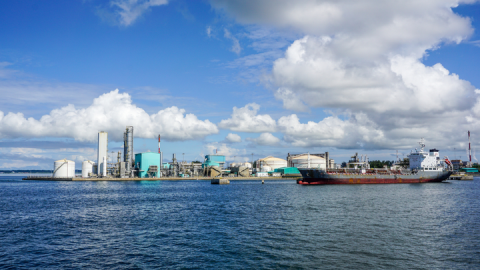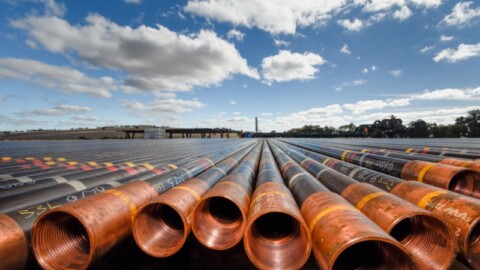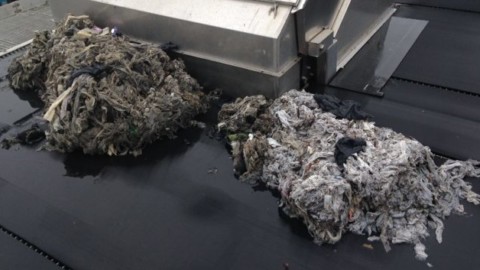Australia is increasingly dependent on the gas pipelines that deliver this vital energy source around the nation. The construction of gas pipelines has experienced a boom in the past decade, but equally important is the ongoing maintenance work required to ensure the integrity of this critical infrastructure.
As we become increasingly dependent on energy pipelines, the potential impacts of pipeline failure have become increasingly serious. Managing this risk, and ensuring pipelines do not fail, is a major focus for all pipeline operators now and in the coming years.
Managing integrity
The requirements to safely operate and maintain a gas pipeline in Australia are outlined in the pipeline industry’s Standard, AS2885.
AS2885 sets out requirements for the design and construction, welding, operation and maintenance and field pressure testing of gas and liquid petroleum pipelines.
The Standard was developed by Standards Australia with involvement from the Australian pipeline industry, with contributions from pipeline regulators, engineers, constructors, managers and owners.
The Standard is continually evolving, as new technologies enter the market and new discoveries are made regarding the safe management and operation of gas pipelines.
The Standard features an integrity management, or risk management approach, which enables companies to develop their own risk-based integrity management plans applicable to their own operations. It gives them more flexibility in their maintenance programs which can provide cost savings, while maintaining quality.
The owner/operator perspective
APA Group
APA Group states that maintaining their assets well is key to ensuring gas transportation and storage services are delivered safely, reliably and cost-efficiently for the long-term. APA has a national maintenance program for all the assets that they maintain and operate to meet technical requirements and ensure good industry practice.
Inline pipeline inspection or ‘intelligent pigging’ is one of the asset integrity management processes that APA uses to inspect and confirm the condition of a pipeline. The intelligent pigs sent through a pipeline can detect metal loss corrosion, stress corrosion cracking and other pipeline defects on both the inside and outside of a pipeline. The process is designed to minimise impact on the flow of gas in a pipeline and is normally conducted at periodic intervals of a few years.
APA uses the world’s best technology including high resolution electromagnetic and ultrasonic pigs that travel in the gas stream. The sensors in these intelligent pigs measure the size and exact location of even minute changes in a pipeline’s condition. Intelligent pigging provides a health check for a pipeline to ensure its ongoing fitness for service as well as meeting legislative and licensing requirements. By keeping detailed diagnostic records and undertaking timely repairs or preventative maintenance, APA can effectively extend the safe useable life of their pipelines.
Dampier Bunbury Pipeline
Dampier Bunbury Pipeline (DBP), owners of the pipeline of the same name in Western Australia, outline their commitment to pipeline integrity management in their ‘ZEROHARM’ health, safety and environmental policy.
A cornerstone of the ZEROHARM commitment is protecting the integrity of the pipeline. DBP monitors safety on the pipeline twenty-four hours a day, seven days a week via a dedicated control centre. Frequent helicopter patrols are conducted performing aerial safety assessments which ensure DBP is able to monitor the pipeline corridor and any works or activities happening in its vicinity.
The surface is protected from corrosion by a coating material and an impressed current system.
The pipeline is cleaned and inspected internally by a process known as ‘pigging’ approximately every ten years. This involves inserting a pipeline internal gauge ‘pig’ which is propelled through the line by the gas pressure while it scrubs the sides of the pipeline. It is followed by a high-tech tool which measures the thickness of the steel pipe wall electronically.
APLNG
APLNG has developed its integrity and maintenance plan for their gas transmission pipeline in adherence to AS2885. The key requirements of its plan are as follows:
- APLNG will assume responsibility for the safety of the gas pipeline.
- All threats to a gas pipeline will be identified and either controlled or the associated risks will be evaluated and managed to an acceptable level.
- The gas pipeline will be designed and constructed to have sufficient strength, ductility and toughness to withstand all design loads to which it may be subjected during construction, testing and operation. The design will be reviewed, assessed and approved.
- Before the gas pipeline is placed into operation, it will be inspected and tested to prove its integrity.
- The integrity and safe operation of the gas pipeline will be maintained in accordance with an approved safety and operating plan.
- Where changes occur in or to a gas pipeline or its surroundings, which alter the design basis or affect the original integrity, appropriate steps will be taken to assess the changes and where necessary implement modifications to maintain safe operation of the gas pipeline.
- At the end of its system design life, the gas pipeline will be abandoned unless an approved engineering investigation determines that its continued operation is safe.
- Before a gas pipeline is abandoned, an abandonment plan will be developed and approved.
Jemena (Eastern Gas Pipeline)
Pipeline integrity is ensured through continuous flow monitoring (via SCADA) and the capacity to limit and isolate flow. Automated and manual shut in valves are a feature at each receipt and delivery point, and at a further seventeen locations along the pipeline. The Jemena Melbourne Control Centre monitors, on a continuous basis, the quality of the gas entering the pipeline. The analysis is performed by the gas chromatographs installed at each receipt point, and values are fed into the SCADA system.
Future proofing our pipelines
As the pipeline industry evolves, updates are constantly made to AS2885, and new and better ways to manage a pipeline’s integrity are brought to market. As Australia’s pipeline infrastructure ages, there is little doubt that our approach to operation and maintenance will need to adapt to meet the needs of the network.
The challenge for Standards Australia, the Australian Pipeline Industry Association and the committees involved in developing and updating AS2885, will be ensuring our gas pipeline network remains up to the task of safely delivering hydrocarbons to an energy-hungry population.














